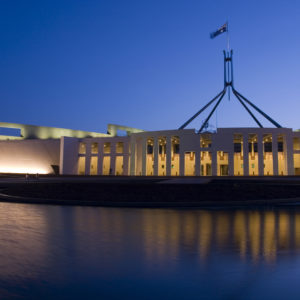2020 Federal Budget – Summary
This summary provides commentary on the macro-economic view of the federal budget announcements and highlights key changes for investors and advisers, particularly in superannuation.
Economic update
The COVID budget we had to have
The Australian Treasurer, Josh Frydenberg has delivered a highly stimulatory budget in the face of the COVID-led downturn. Long gone is any suggestion about a return to surplus soon, with deficits expected each year over the medium-term projections to 2030/31.
Several initiatives had already been introduced in the face of COVID, including JobKeeper and the small business lending guarantee scheme. Additionally, the Reserve Bank has assisted by cutting interest rates to 0.25% and providing funding to banks. This budget provides further support to the economy, focused on jobs recovery and increasing household disposable income.
Policy initiatives
The budget centres around three key measures for the economic recovery:
- A bringing forward of the second stage of the tax cuts from 2022/23 to this financial year, which should increase household disposable income by about $12.5 billion over the next 12 months (0.6% of GDP).
- A refined wage subsidy program that targets individuals under the age of 35. Given there are nearly 700,000 Australians aged up to 35 receiving JobSeeker or Youth Allowance, this should provide some support to the recovery in the labour market.
- Increasing infrastructure spending by $10 billion over the next four years, adding to an already substantial pipeline and bringing the total to $110 billion over 10 years.
Economic and fiscal outlook
Along with the usual economic and fiscal forecasts, this budget has required assumptions around the evolution of the COVID outbreak and the provision of a vaccine. On the former, it is assumed that localised outbreaks may occur but are largely contained, which we think is appropriate. A population-wide COVID-19 vaccination is assumed to be available by late 2021. Whilst there are some uncertainties around the timeline for a vaccine, this assumption is in line with other forecasts, including the Good Judgement Project. The Budget also includes funding to secure access to more than 84 million doses of a potential vaccine candidate developed by either Oxford University or the University of Queensland.
Moving now to the economic forecasts, real GDP is expected to fall by 1.5% in 2020/21 and then rebound by 4.75% in 2021/22. However, the budget expects the output gap (i.e. the gap between actual activity and potential activity) to be positive until 2024, which will limit the inflationary pressures in the economy. One area of the economy that we are more cautious on is the strength of the consumer. Some of the boost to disposable income is likely to be saved or used to pay down debt, given the very high level of household debt.
The Budget is forecasting the unemployment rate to remain above 6% through to 2022/23, which is important as the Treasurer has noted that the government would not be looking to tighten fiscal settings before the unemployment rate is comfortably below that level.
The Budget is expected to remain in deficit through to 2023/24, with annual deficits running from 11% of GDP in 2020/21 down to 3% in 2023/24. Whilst this and the associated increase in debt sounds alarming, it is likely that the interest expense will be lower through the forecast period than it was last year, given the continued decline in interest rates. Given the spare capacity that will remain in the economy, this continued spending will provide support to domestic demand.
Implications for portfolios
As mentioned above, we remain cautious on the Australian consumer, however this budget should provide a bit of relief for those consumer-facing sectors of the equity market. More importantly, as we have highlighted in our recent Global Market Outlook, we are now in the early cycle, which is a favourable environment for risk assets, and thus this budget just adds a bit more support to that thesis.
This deficit spending is going to see a rise in debt issuance from the Australian Office of Financial Management, however we don’t think it’s going to lead to a big jump in interest rates. Firstly, the Reserve Bank of Australia (RBA) is undertaking a bond purchase program in the form of their Yield Curve Control and will continue to absorb some of the bonds on issue. Secondly, Australia continues to see strong overseas demand for government bonds, which should continue given interest rate differentials.
Finally, we are likely to see some form of further easing from the RBA. They chose to keep policy unchanged at their October meeting (just hours before the Budget announcement), but noted that they continue to ‘consider how additional monetary easing could support jobs as the economy opens up further’. This further easing would most likely be in the form of a reduction in the cash rate and the three-year target from 0.25% to 0.1%, as well as reducing the interest rate on the funds offered to the banks through the Term Funding Facility (also to 0.1%).
Superannuation update
Superannuation reform package: Your Future, Your Super
This year’s Federal Budget contained a significant package of superannuation reforms, which continues the trajectory of reform the industry has been on the last few years. The measures themselves largely builds on existing reform the industry has bedding down recently, as well as the recommendations from the Financial Services Royal Commission and Productivity Commission review of superannuation. The package has been positioned as reducing ‘wastage’ in the system due to duplicate accounts and underperforming funds and is estimated to save fund members $17.9 billion over the next 10 years.
The four key measures include:
1. ‘Stapling’ of accounts
Under this measure, a member’s super account will be ‘stapled’ to them as they change jobs. New super accounts will no longer be automatically created each time someone starts a new job. This Royal Commission recommendation will see employers paying super for new employees into their existing funds, unless the employee nominates another fund. If they have no existing fund and do not nominate a fund, the employer’s default will apply.
The Government expects this measure to significantly reduce the number of unintended multiple accounts and reduce the associated fee leakage.
While some of the potential benefits of this change are clear, due consideration has to be given to the implementability of this change in such a short timeframe (e.g. can employers accommodate the additional administrative burden?) and any unintended consequences of such a reform. An example of such a consequence may be increased insurance premiums due to the significant impact on the way ‘default’ group insurance works. We expect future access to a group insurance arrangement may increase the employee value proposition, particularly where employers pay for insurance coverage.
2. Empowering member choice
The Government has committed to launching a new interactive ‘YourSuper’ comparison tool to help members decide which super fund best meets their needs. The tool will compare MySuper arrangements ranked on fees and investments, provide links to fund websites, as well as prompt users to consider consolidating.
We note that MyGov has much of this functionality already and plans were already underway to allow an employee to nominate a superannuation fund through MyGov when they joined a new employer. So this announcement looks to be a recommitment to build out this tool by adding certain comparison metrics, as well as enhancing the usability.
At this stage, there is no indication on how the ranking or comparisons will be prepared or what basis will be used. Of course, there is a real risk that they will overlook special arrangements such as employer fund fee discounts, bespoke insurance arrangements or additional members services. Indeed, the comparison of MySuper default investment returns itself is a hotly debated topic, given how much variation there can be in the make-up and risk profile of different default investment options.
3. Holding ‘underperforming’ funds to account
Under this measure, by 1 July 2021, MySuper products will be subject to an annual ‘performance’ test. Funds deemed to be underperforming will have to inform its members of its underperformance by the following October, including information regarding the new YourSuper tool (see above).
Funds that fail two consecutive annual underperformance tests will not be permitted to accept new members unless their performance improves.
The Government intends to extend these annual tests to non-MySuper products by 1 July 2022.
While the budget papers were light on detail on this measure, we would assume the starting point for defining underperformance to be based on the current APRA ‘heatmap’ analysis. But we don’t know what threshold will constitute underperformance.
Given the amount of industry debate around the robustness and unintended consequences of the heatmap metrics, you would expect plenty of industry debate on this measure and whether it will achieve the outcomes it seeks to achieve.
4. Increasing Accountability and transparency
The Government has indicated that it will move to increase the accountability and transparency of superannuation trustees by:
- requiring them to comply with a new duty to act in the best financial interest of the member
- requiring them to demonstrate that their actions had a reasonable basis and is consistent with the members’ best financial interests
- Trustees may disclose key information around how they spend and manage their money ahead of the Annual Members’ Meeting.
Broadly, these measures are in line with the regulatory focus and requirements under the ‘Member Outcomes’ package, which super trustees have been implementing over the last few years.
The Government intends for the measures outlined above to commence on 1 July 2021.
The Government has indicated the regulatory costs in implementing these measures will be borne by funds (and members) through the increase in existing superannuation industry levies.
No change to the Superannuation Guarantee Increase Schedule
Despite recent discussions in the media, the budget did not announce any change to the forthcoming legislated Superannuation Guarantee (SG) increases.
The Superannuation Guarantee Rate is scheduled to increase by 0.5% of ordinary time earnings each year over the next five years as follows:
| Period | Superannuation Guarantee Rate (% of OTE) |
| 1 July 2021 – 30 June 2022 | 10.00 |
| 1 July 2022 – 30 June 2023 | 10.50 |
| 1 July 2023 – 30 June 2024 | 11.00 |
| 1 July 2024 – 30 June 2025 | 11.50 |
| 1 July 2025 – 30 June 2026 and thereafter | 12.00 |
The forward estimates that show the projected budget position for future years show increases in the cost of superannuation tax concessions, suggesting that the SG increases are factored in and indicating no decision to change the schedule at this point in time.
We note that the Government has still not released the Retirement Income Review, which was handed to the Government in July. There was previously some speculation that the Retirement Income Review would provide the basis for reviewing the scheduled SG increases.
The Prime Minister said as recently as August that no decision on the SG increase has been made, leaving the door open to come back to this, prior to the increase next year.
Of course, the SG only applies to people that are in work, many of whom will have benefited from the personal tax cuts announced in the budget. While different groups have modelled a reduction in wages growth as a result of SG increases, we would expect the tax cuts to help cushion any actual impact, countering some of the arguments that have been made against the increase.
Going ahead with the SG increases provides an opportunity to rebuild retirement savings after the impact of the COVID-19 early release program, which has seen over 3 million members withdraw over $33 billion from the superannuation system to date. Although, the people who accessed super under that program are not necessarily those that will benefit from the SG increase, expect further discussion on equity in the superannuation system.
In our view, the superannuation system has provided an economic buffer for Australia and it’s appropriate to rebuild it along with other national building projects as a part of the recovery from the pandemic.
Revised start dates for tax and superannuation measures
The Government announced a change to the start dates for a number of previously announced measures:
- The start date for the 2018/19 Budget measure Superannuation — increasing the maximum number of allowable members in self-managed superannuation funds and small APRA funds from four to six has been revised from 1 July 2019 to the date of Royal Assent of the enabling legislation.
- The start date for the 2019/20 Budget measure Superannuation — reducing red tape for superannuation funds (exempt current pension income changes) has been revised from 1 July 2020 to 1 July 2021.
- The start date for the 2015/16 Budget measure Cutting Red Tape – lost and unclaimed superannuation, to allow the ATO to pay lost and unclaimed superannuation amounts directly to New Zealand KiwiSaver accounts, has been revised from 1 July 2016 to six months after the date of Royal Assent of the enabling legislation.
- The previously announced deferral of the commencement of the Retirement Income Covenant, from 1 July 2020 to 1 July 2022, to allow continued consultation and legislative drafting to take place during COVID-19 and to take into account the Retirement Income Review, was confirmed.
- The Government will amend the Treasury Laws Amendment (Reuniting More Superannuation) Bill 2020, which facilitates the closure of ERFs, to change several dates. These include deferring by 12 months the start date of the measure that prevents superannuation funds transferring new amounts to eligible rollover funds (ERFs), deferring the date by which ERFs are required to transfer accounts below $6,000 to the ATO to 30 June 2021, and deferring the date by which ERFs are required to transfer remaining accounts to the ATO to 31 January 2022. It will also allow all superannuation funds to voluntarily transfer amounts to the ATO in circumstances where the trustee believes it is in the best interests of that member, such as amounts that would otherwise have been transferred to an ERF.
Additional funding to address serious and organised crime in the tax and superannuation system
The Government announced an additional $15 million for the Australian Taxation Office (ATO) to target serious and organised crime in the tax and superannuation systems. This extends the 2017/18 Budget measure Additional funding for addressing serious and organised crime in the tax system by a further two years to 30 June 2023.





